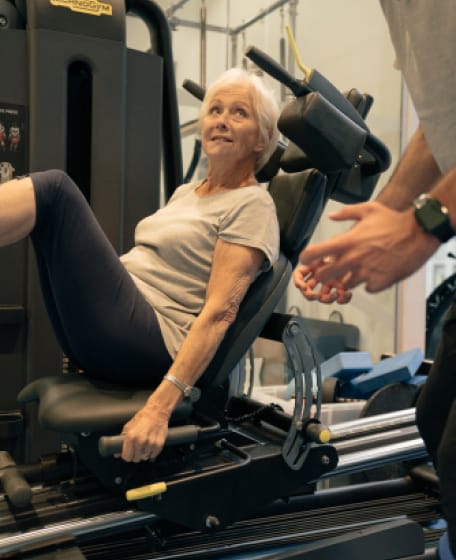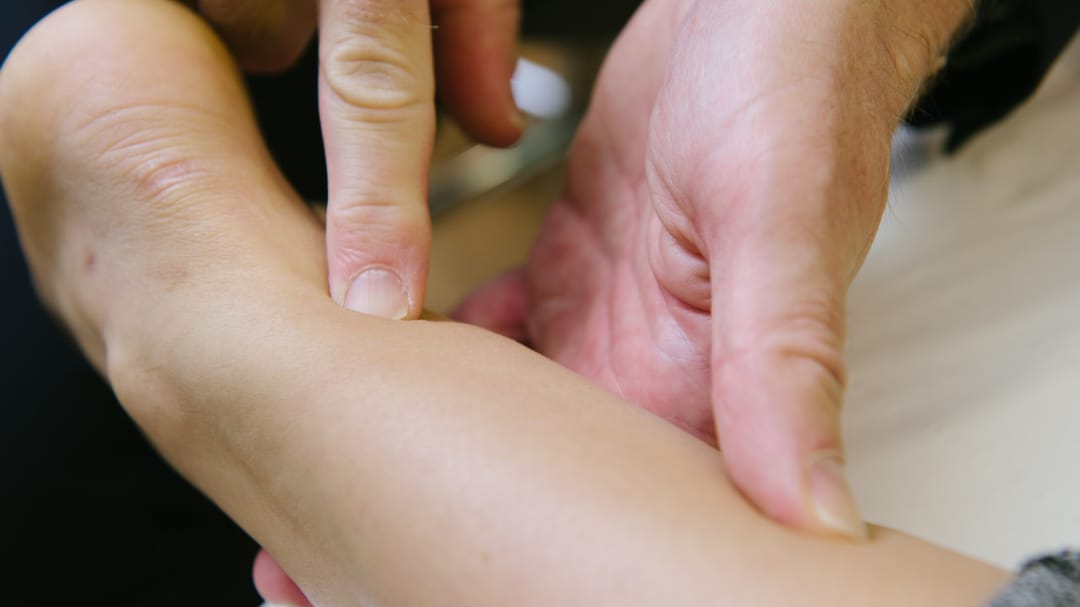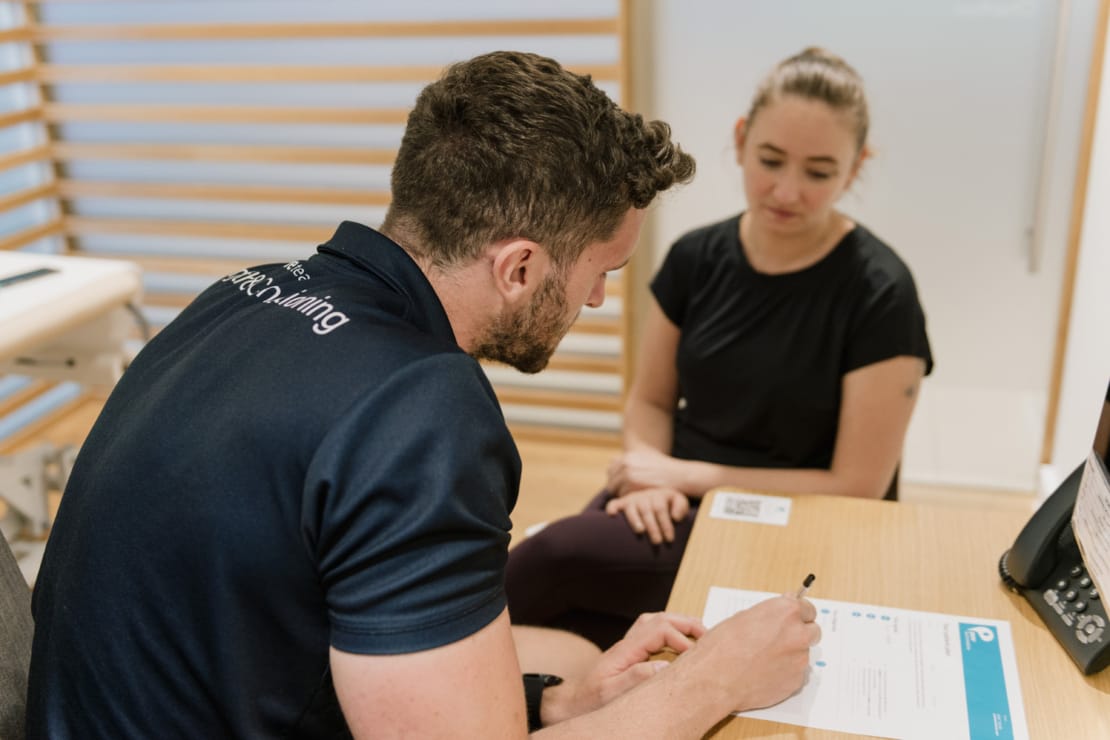Causes of Hip and Groin Pain

Dr Michael Burdon
Consultant in Sport, Exercise & Musculoskeletal Medicine
- 21 September, 2018
- Joint Pain
- Strength & Conditioning
- Pain Management
- 5 min read
One of the most common problems we, as Consultants in Sport, Exercise & Musculoskeletal Medicine, see both in sport and everyday life is hip and groin pain.

You may be thinking, ‘Why does my groin hurt?’ This can pose a challenge to even the most experienced clinician, as there are various conditions that may cause either hip or groin pain. Following the UK’s national lockdowns in 2020, many people’s activity levels changed; for some, working from home meant a less active life that can precipitate issues such as back and hip pain, and not walking or exercising as much as before, which enhanced the risk factor of hip and groin injuries.
On the other hand, many people started running as their mode of exercise during this time, and already keen runners were on average running more than usual, both scenarios provoking some causes of hip and/or groin pain.
Exercising is crucial to reducing inflammation in our bodies as it protects us from many health issues in both the short and long-term. So, taking into account what I mentioned above, with injuries arising for both people who did less activity than normal and those who did more, what can we do to either avoid or manage these types of injuries?
First, we need to acknowledge what they are and where the root of the issue is, then we can adopt the most appropriate treatment, be that rehab (managing the injury that has occurred) or pre-hab (building resilience in order to avoid future injury).
Back or Disc Issues
The first thing to note is that hip/groin pain can be caused by an issue in the back, specifically when the pain is transferred from a joint or disc issue in the lower spine. Sometimes the pain may be felt further down the leg or associated with pins and needles or numbness in the leg – it may also worsen when coughing or sneezing.
A reason for this type of pain or injury could be the increased time spent sitting for long periods when working from home, because when we sit, we load the spine whilst lessening the load on the stabilising muscles in the hips and back, which, when standing or moving, protect our spines.
Regular breaks to stand, walk or stretch can help reduce the likelihood of this happening.
Osteoarthritis
Think of the hip joint as a ‘ball and socket’ – it is a large, stable joint, but as with anything we constantly use, it can, over time, accrue injury or develop problems.
Although not limited to, osteoarthritis (OA) of the hip develops commonly in persons aged 60 years and above, but we do sometimes see this in younger age groups – especially if someone has experienced previous problems with their hip.
Osteoarthritis may cause groin pain or a feeling of pain deep within the hip joint. Groin pain when walking, after running or other forms of exercise may occur if either too much load has been put on the body or the movement has caused unnecessary muscle strain on a particular body site.
Keeping active and exercising in the right way is, of course, important in the long term, but ‘the right way’ can be difficult to decipher with all the messaging available, to be sure what approach is right for you it is always best to get the input from an expert clinician such as a Strength & Conditioning Coach.
Femoroacetabular Impingement
Another condition of the hip joint that we may see in younger adults is called Femoroacetabular impingement of the hip (FAI).
This can happen when an extra bump of bone within the hip joint irritates the cartilage and may lead to a tear of the cartilage or eventually to osteoarthritis.
There may be a history of locking or catching in the hip joint. We have seen cases of this presenting when someone has started exercising again after a generally inactive period, or when activity levels have increased in volume or intensity, such as in running or team sports – the latter picking up quickly following the easing of restrictions.
In this instance, your best first point of call is either a Physiotherapist or a Consultant in Sport, Exercise & Musculoskeletal Medicine in order to complete a full and detailed assessment.
Soft tissue & Tendons
The most common problem with Soft Tissue or tendons causing hip/groin pain is the overuse or strain of the psoas muscle (a muscle in the lower back which extends through the pelvis to the femur) and tendon (a hip flexor).
This often causes pain to be felt more localised in the front of the hip. Pain may be found when pressing on the area, and it can be painful when testing the hip against resistance.
The gluteal tendons on the outer side of the hip can also become weak and painful at times – this is known as Gluteus Tendinopathy or Trochanteric Bursitis. This will often present as pain lying on the affected side at night and can be seen in people who experience a severe decrease or increase in activity levels.
Other tendon problems may include adductor injury, more commonly known as a groin strain. In those instances, there may be a history of acute or recent injury caused by turning or twisting in sport or other activity. In some cases, the pain develops gradually over time rather than showing immediately.
An expert Physiotherapist and/or Soft Tissue Therapist is often involved in the rehabilitation and treatment of these injury types.
Hernia
A hernia can sometimes cause discomfort or pain in the groin region, which may range from a dull ache to a sharper, more noticeable sensation. In cases of a true hernia, you might also observe a visible lump or swelling in the affected area. This swelling often becomes more pronounced when you are standing, coughing, or straining, because these activities increase pressure inside the abdomen and push more tissue into the hernia sac. In many instances, the swelling is easy to see or feel, making the diagnosis more straightforward. However, not all hernias present so clearly. In more subtle cases, there may be no obvious bulge, and symptoms might be vague—such as a sensation of heaviness, mild tenderness, or intermittent discomfort—making it harder to recognise without a proper physical examination. For this reason, it’s important to seek evaluation by a healthcare professional who can perform specific tests and manoeuvres to help identify the presence of a hernia and guide further management.
Diagnosis & Treatment
The above list is by no means exhaustive; there are a number of other conditions that may present in addition to those problems.
Careful history and accurate examination by a medical professional are essential to gain a correct diagnosis. In addition, imaging, such as MRI or Ultrasound scans, is also often useful to identify true causes and rule out others.
In particular, and when necessary, ultrasound of the groin and hip is very useful and can assess for hernia and tendon issues. Your treating clinician will always advise on the best course of treatment and what adjuncts are necessary.
Depending on the diagnosis, there is a variety of treatments, alongside anti inflammatory medication, that may be needed. These include rehabilitation with a Physiotherapist or Osteopath, ultrasound-guided injections, shockwave therapy and occasionally surgery.
We have a number of experienced Consultants and Physiotherapists who can assess hip and groin conditions in all of our 7 London based clinics.
If you’re suffering from hip or groin pain and want to see one of our clinicians, book your appointment online or contact one of our clinics today.

Advice
Over the last 20+ years our experts have helped more than 100,000 patients, but we don’t stop there. We also like to share our knowledge and insight to help people lead healthier lives, and here you will find our extensive library of advice on a variety of topics to help you do the same.
OUR ADVICE HUBS See all Advice Hubs

